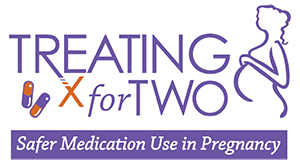Key Findings: Assessing YouTube Videos for Content on Medication Use during Pregnancy
Share with your friends

YouTube videos don’t often reflect what’s known about the safety of medications in pregnancy. Learn more about this new study and talk to your healthcare provider about medication use during pregnancy.
The journal Pharmacoepidemiology and Drug Safety published a new study looking at the content of YouTube videos. In what is believed to be the first study of its kind, CDC researchers assessed how videos portrayed the safety of specific medications when used during pregnancy. Researchers found that current YouTube videos that discuss medication safety during pregnancy do not often give scientifically accurate information about the safety of specific medications when taken during pregnancy. You can read an abstract of the article here.
Main Findings from This Study
Most pregnant women consult the Internet, including social media sites such as YouTube, Twitter, and Facebook, and use online information when making decisions about their health.
For this study, researchers compared descriptions of medication safety during pregnancy in YouTube videos with the scientific evidence. Analysis of more than 300 YouTube videos showed that information about the safety of medication use during pregnancy is often inconsistent and scientifically inaccurate.
About This Study
For this study, researchers used a set of software instructions, called an Application Programming Interface (API), to search more than 40,000 YouTube videos for specific words and combinations of words about medication use during pregnancy, for example, pregnancy and antibiotic. In total, 314 YouTube videos discussed the safety of a medication or class of medications. Next, researchers compared what each video said about medication safety during pregnancy with what current scientific evidence has shown about the safety of the same medications.
Study Results
- Law firms posted more than 2 out of 3 YouTube videos analyzed. In contrast, universities or government agencies posted only 10 of the videos.
- Just over half of the videos discussed the risk of having a baby born with a birth defect because of medication use during pregnancy.
- Antidepressants, specifically selective serotonin reuptake inhibitors (SSRIs), which are medications used to treat depression and other mental health conditions, were the most frequently discussed medications. Almost 8 out of 10 videos mentioned antidepressants.
- Some previous studies raised concerns about possible relationships between use of specific SSRIs during pregnancy and certain birth defects. About 9 out of 10 YouTube videos that talked about SSRI use during pregnancy described SSRIs as unsafe. However, the Teratogen Information System (TERIS), an online database which gives risk ratings for the use of specific medications during pregnancy, states that the risk for birth defects is “unlikely” or “minimal” for all of the SSRIs that were mentioned in the YouTube videos.
Importance of This Study
Many women need to take medication during pregnancy. Abruptly stopping some medications can have serious consequences. Current YouTube video content does not accurately describe what is known about the safety of specific medications used during pregnancy. That is why it is important for women to talk with their healthcare provider about potential risks of medication use during pregnancy. Because about 50% of pregnancies are unplanned, it is important for all women to have these conversations with their healthcare providers, regardless of whether or not they are pregnant. We know that some medications can cause birth defects very early in pregnancy, often before a woman knows she is pregnant. Conversations with healthcare providers can help women make informed treatment decisions.
Medication Use in Pregnancy: CDC’s Activities

CDC’s National Center on Birth Defects and Developmental Disabilities (NCBDDD) is working to improve the health of women and babies. Through its Treating for Two: Safer Medication Use in Pregnancy initiative, CDC is working with its partners, other federal agencies, and the public to understand trends in medication use among pregnant women and women of reproductive age, and to provide women and healthcare providers with information about the safety or risk of using specific medications during pregnancy. This information will allow women and their healthcare providers to make informed decisions about treating health conditions during pregnancy.
Treating for Two focuses on the following activities:
- Better research: Expanding and accelerating research to fill knowledge gaps.
- Informed decisions: Delivering up-to-date information to support decision making among prescribers, pharmacists, and consumers.
- Reliable guidance: Evaluating evidence to facilitate reliable guidance.
More Information
For more information, visit www.cdc.gov/treatingfortwo.
Key Findings Reference
Hansen C, Interrante JD, Ailes EC, Frey MT, Broussard CS, Godoshian VJ, Lewis C, Polen KN, Garcia AP, & Gilboa SM. Assessment of YouTube videos as a source of information for medication use in pregnancy. Pharmacoepidemiology and Drug Safety. Nov 2015. http://onlinelibrary.wiley.com/doi/10.1002/pds.3911/abstract.
References
- Lagan BM, Sinclair M, & Kernohan WG. Internet use in pregnancy informs women’s decision making: a web-based survey. Birth. 2010;37(2):106-115.
- Mitchell AA, Gilboa SM, Werler MM, et al. Medication use during pregnancy, with particular focus on prescription drugs: 1976-2008. American Journal of Obstetrics and Gynecology. 2011;205(1):51 e51-58.
- Thorpe PG, Gilboa SM, Hernandez-Diaz S, et al. Medications in the first trimester of pregnancy: most common exposures and critical gaps in understanding fetal risk. Pharmacoepidemiology and Drug Safety. 2013;22(9):1013-1018.
- Reefhuis J, Rasmussen SA, & Friedman JM. Selective serotonin-reuptake inhibitors and persistent pulmonary hypertension of the newborn. [comment] New England Journal of Medicine. 2006;354(20):2188-2190.
- Louik C, Lin, AE, Werler MM, Hernández-Díaz S, & Mitchell AA. First-trimester use of selective serotonin-reuptake inhibitors and the risk of birth defects. New England Journal of Medicine. 2007;356(26):2675-2683.
- Alwan S, Reefhuis J, Rasmussen SA, Olney RS, & Friedman JM. Use of selective serotonin-reuptake inhibitors in pregnancy and the risk of birth defects. New England Journal of Medicine. 2007;356(26):2684-2692.
- Finer LB & Zolna MR. Shifts in intended and unintended pregnancies in the United States, 2001 -2008. American Journal of Public Health. 2014;Suppl1:543-548.
- Page last reviewed: November 6, 2015
- Page last updated: November 6, 2015
- Content source:


 ShareCompartir
ShareCompartir